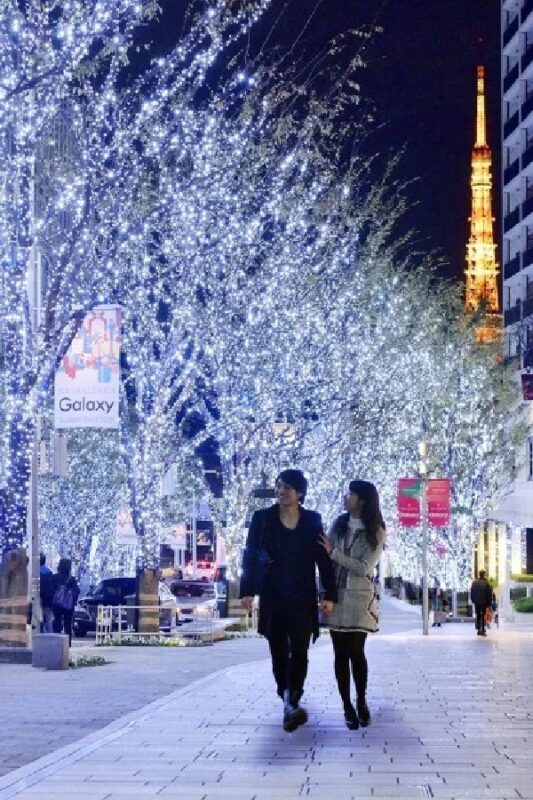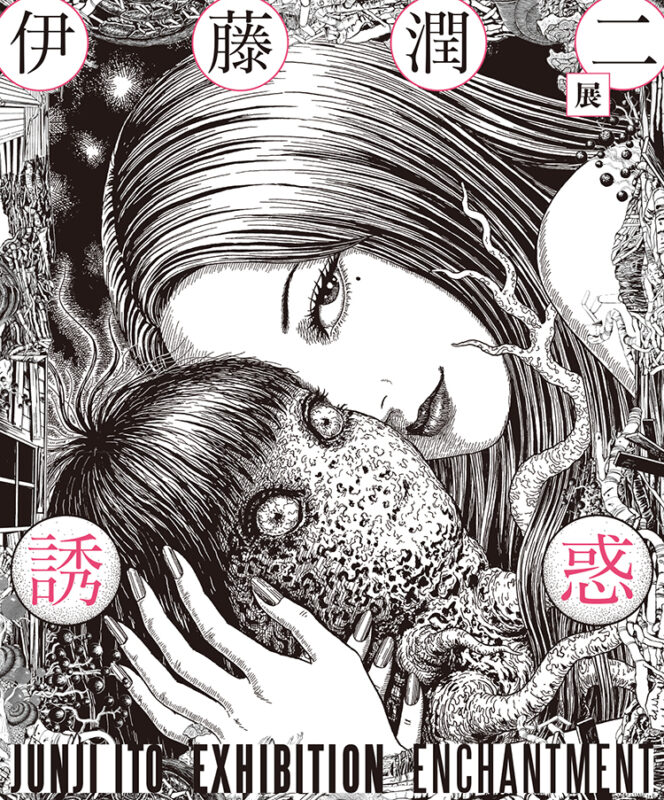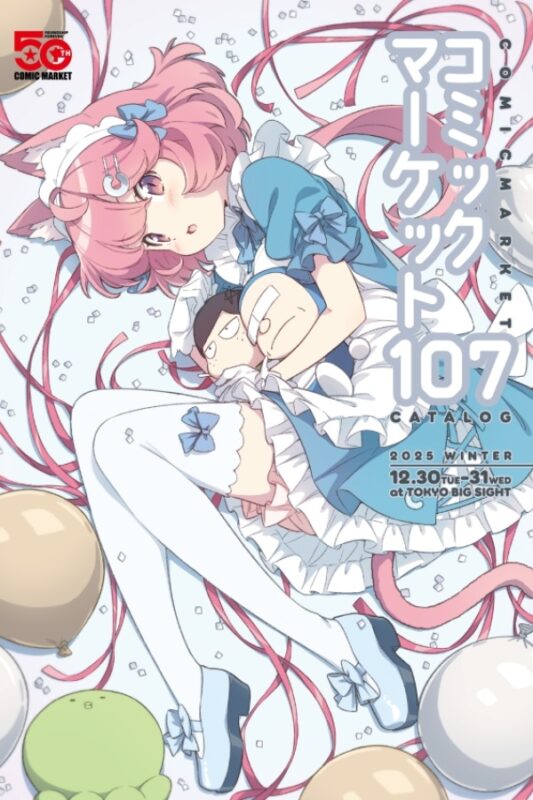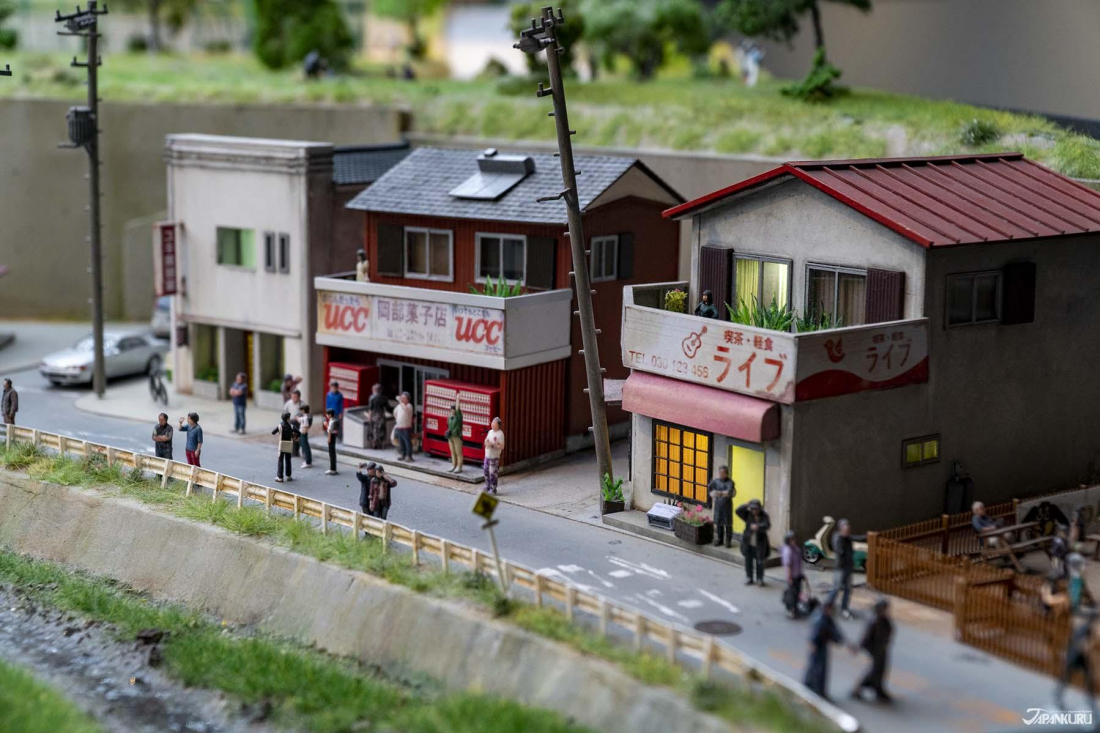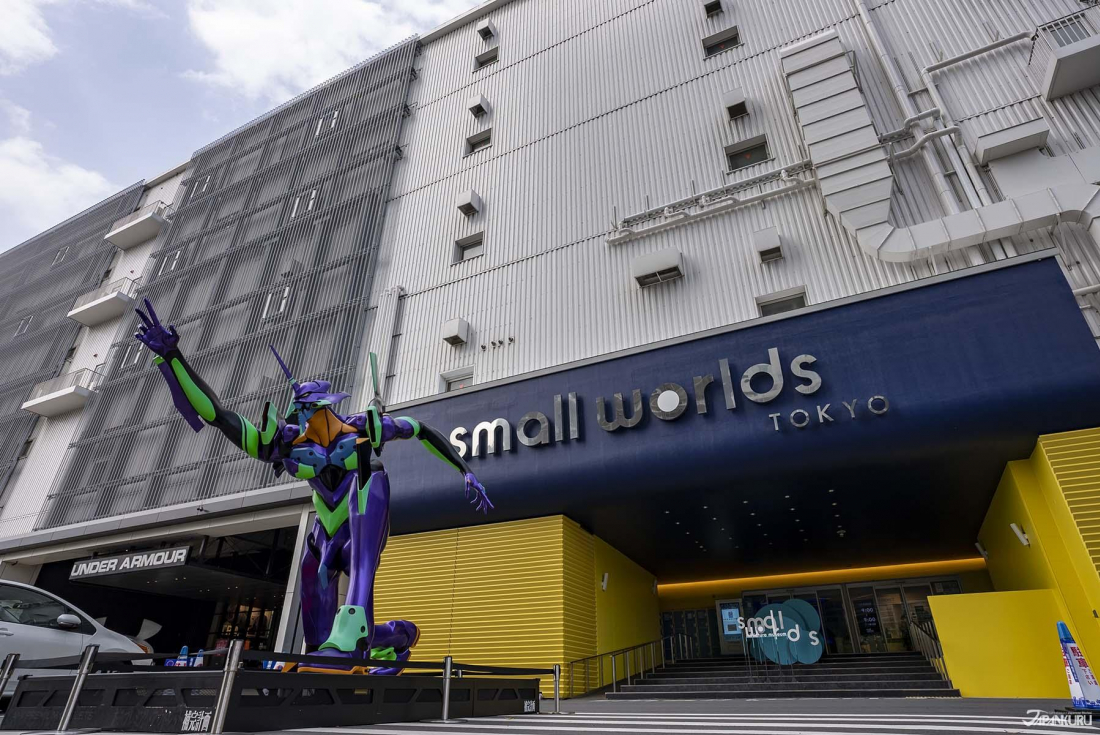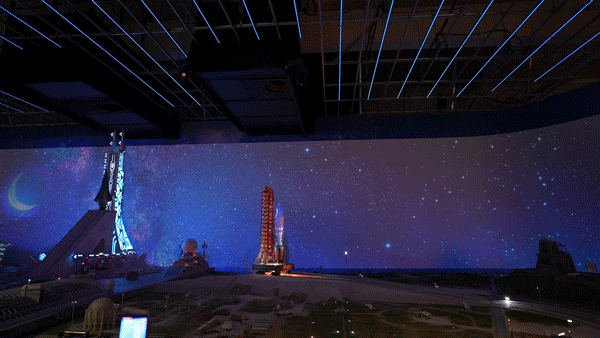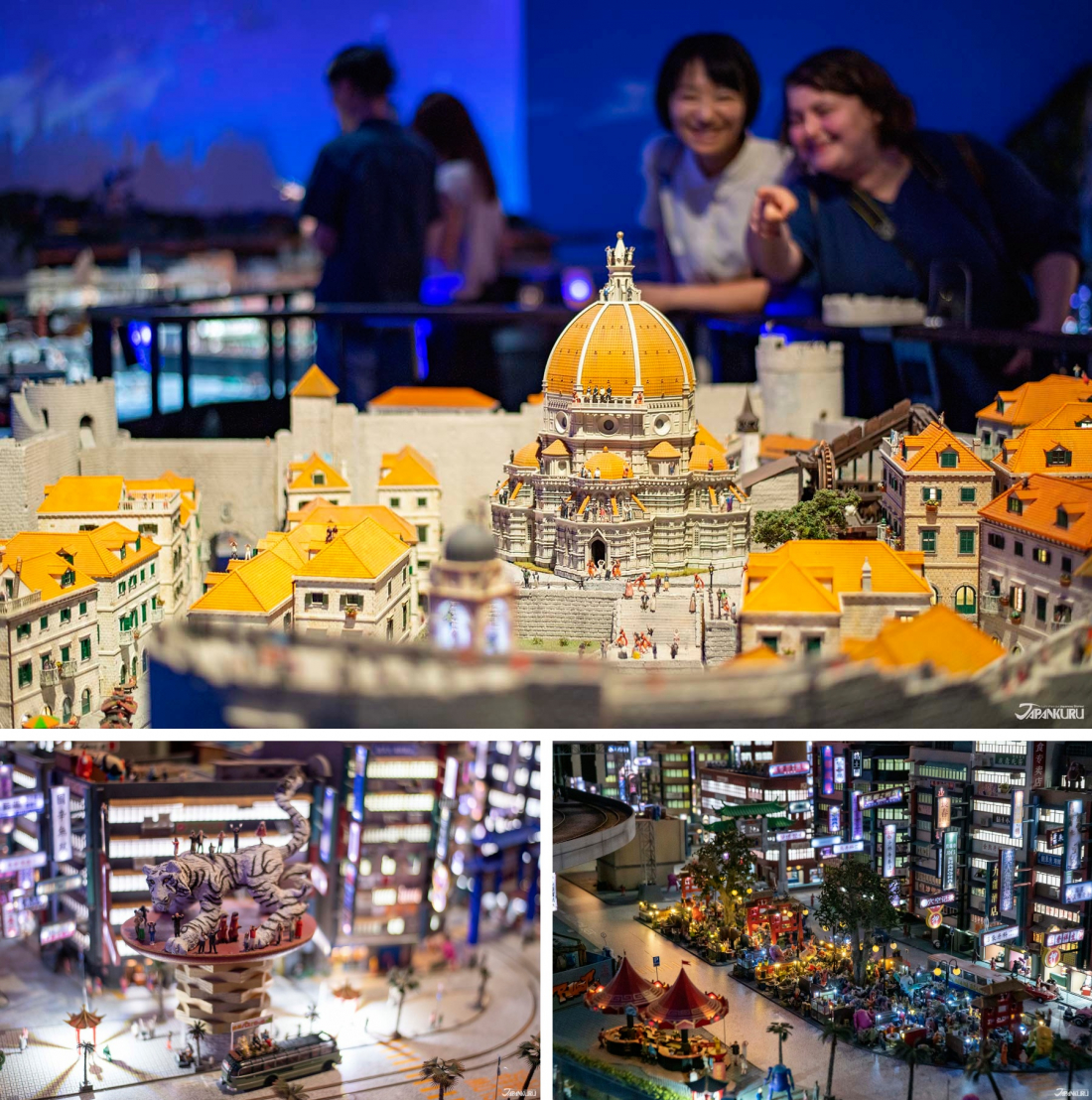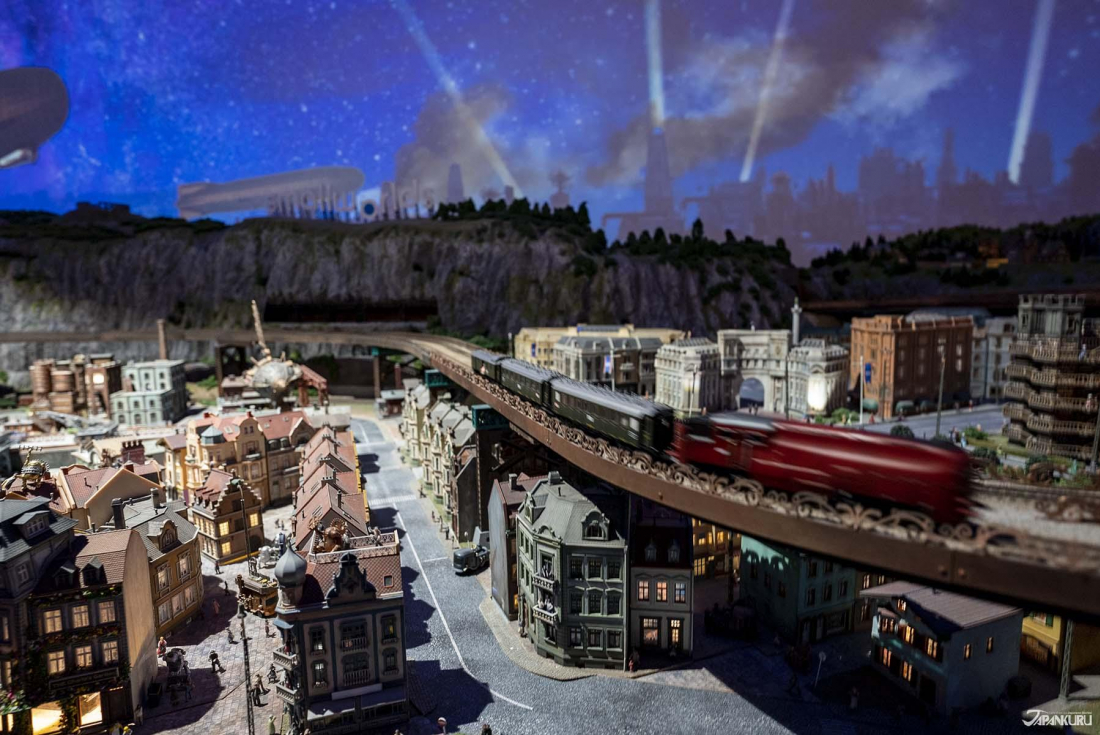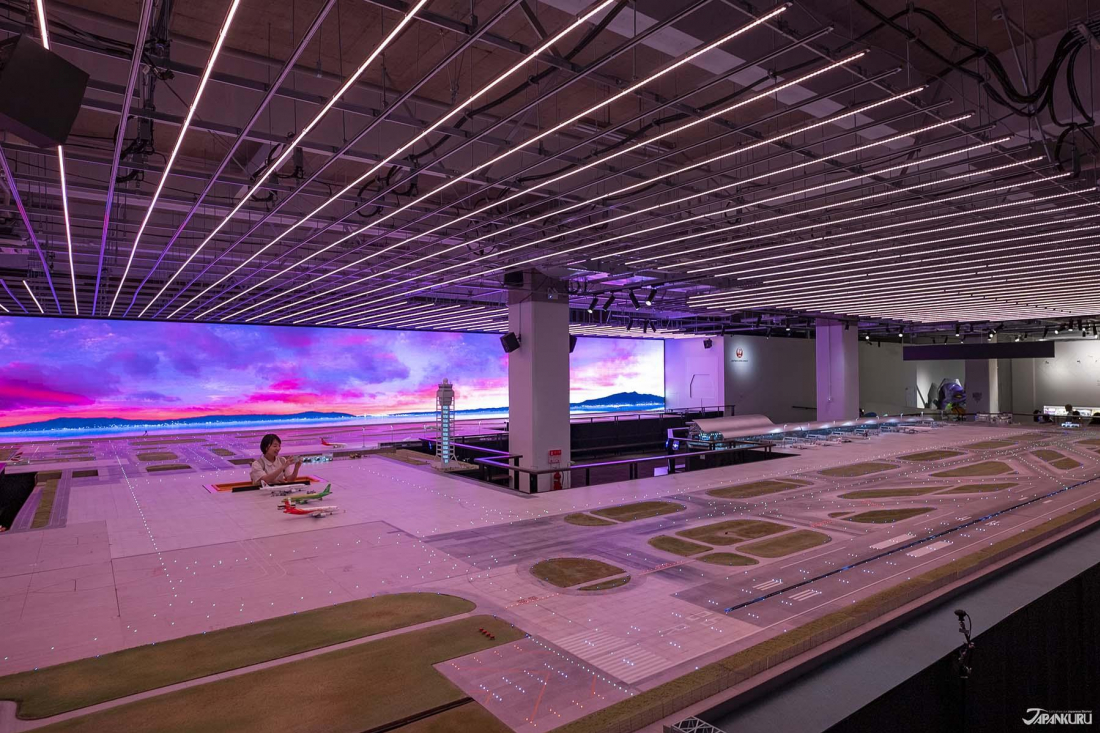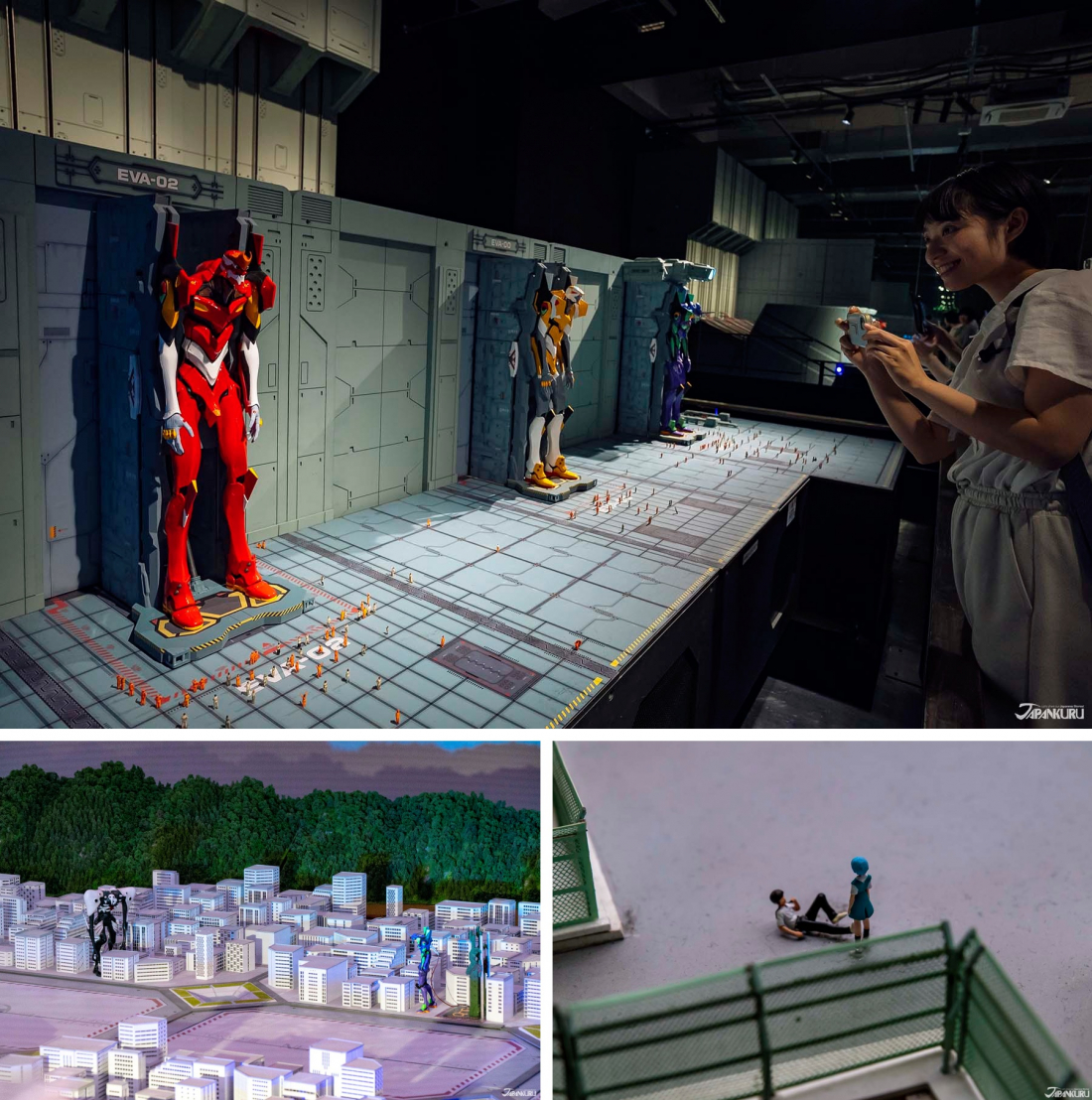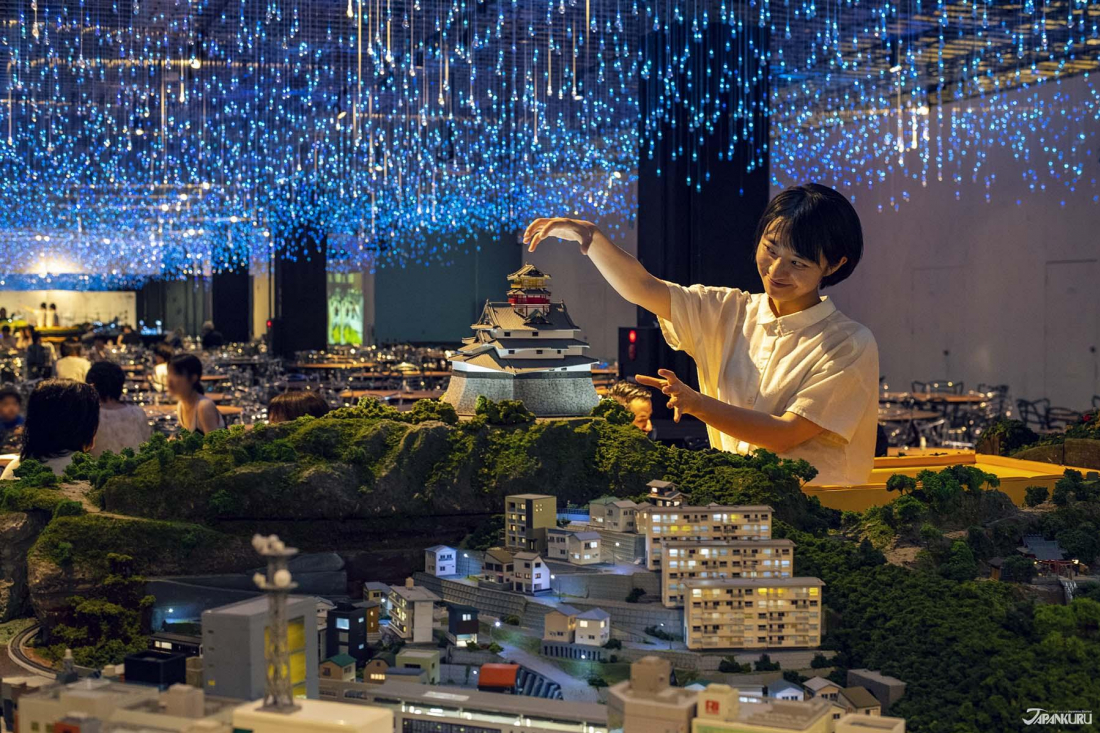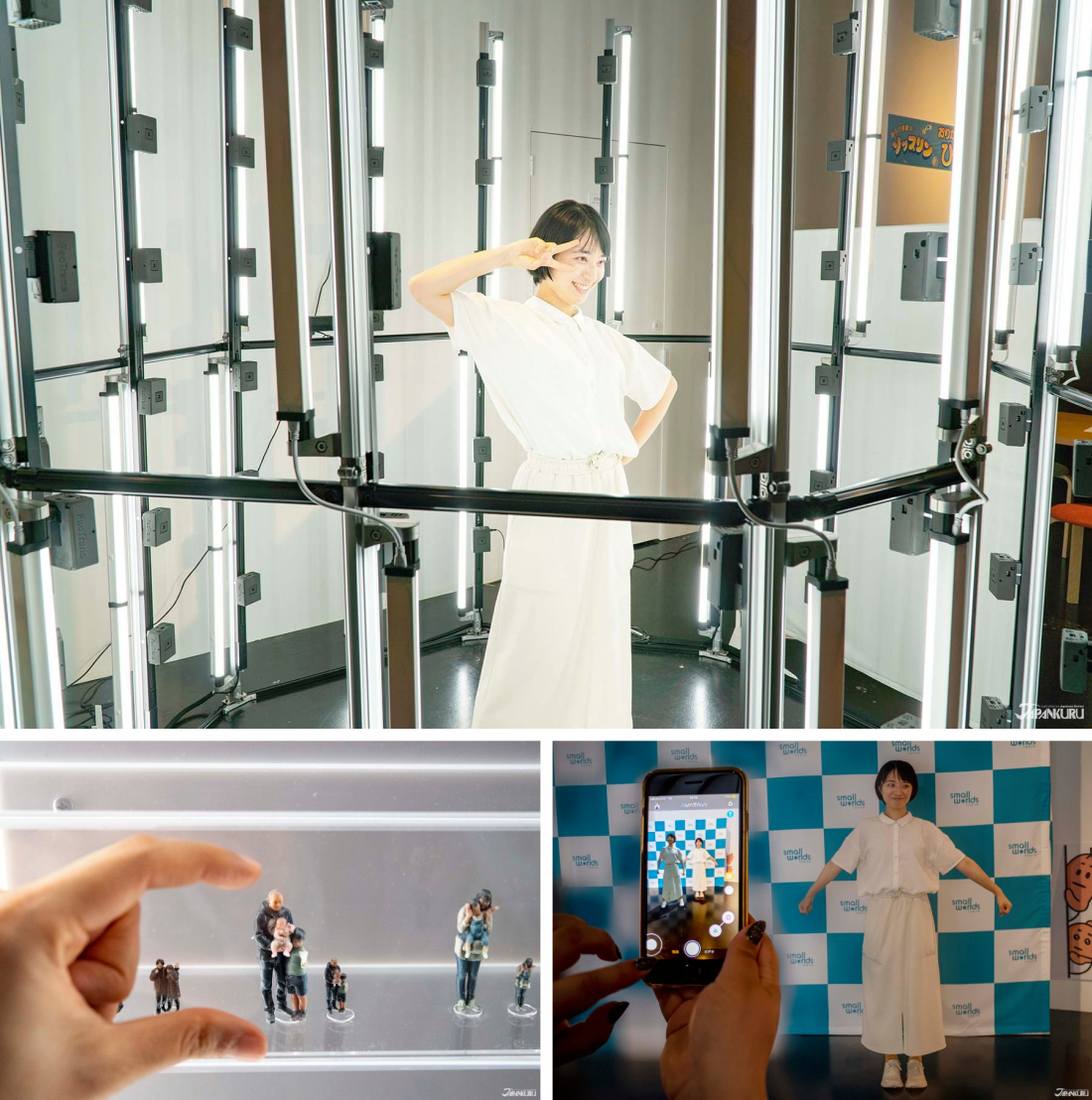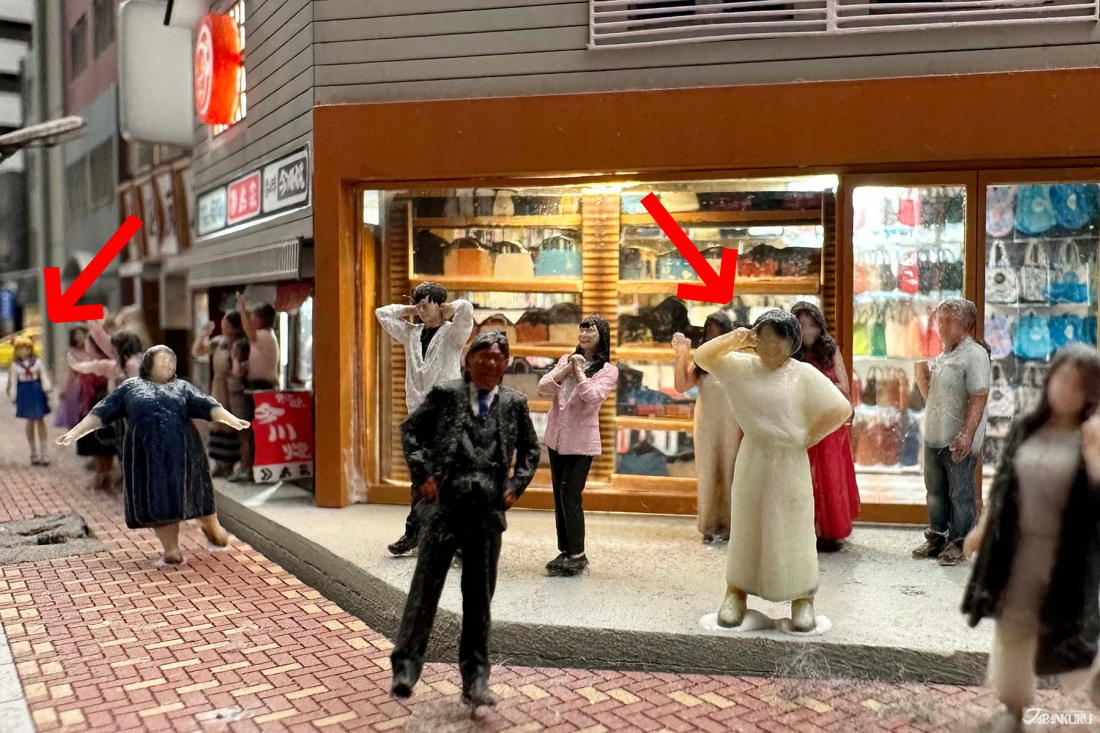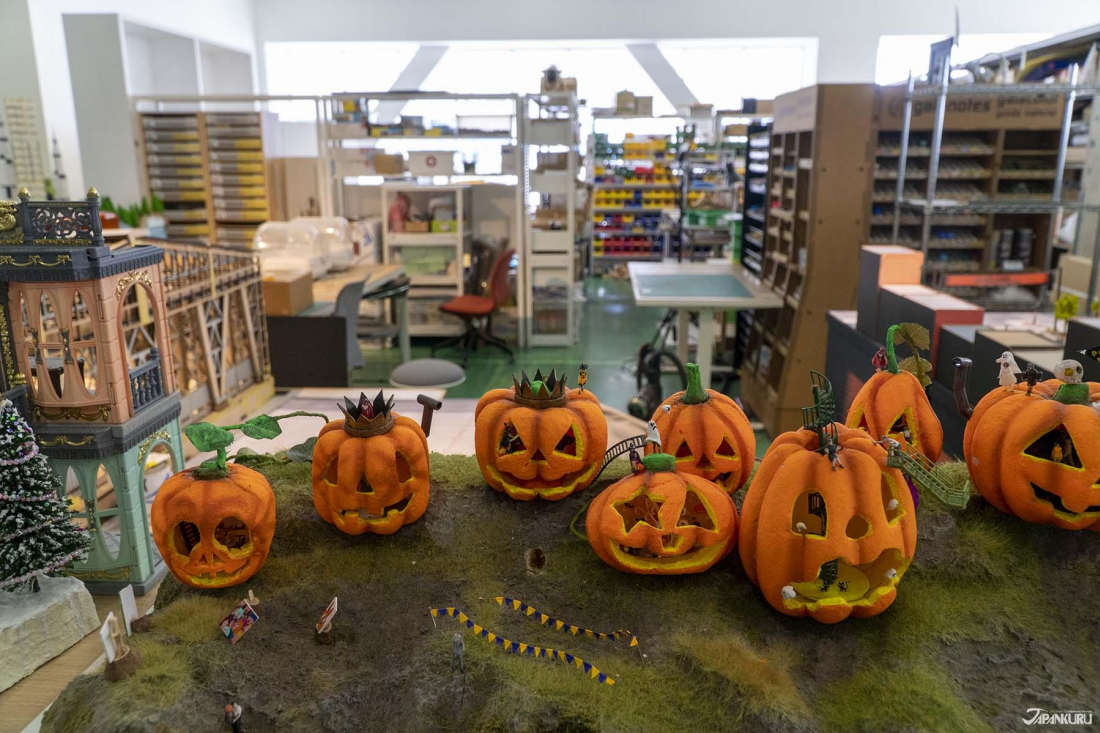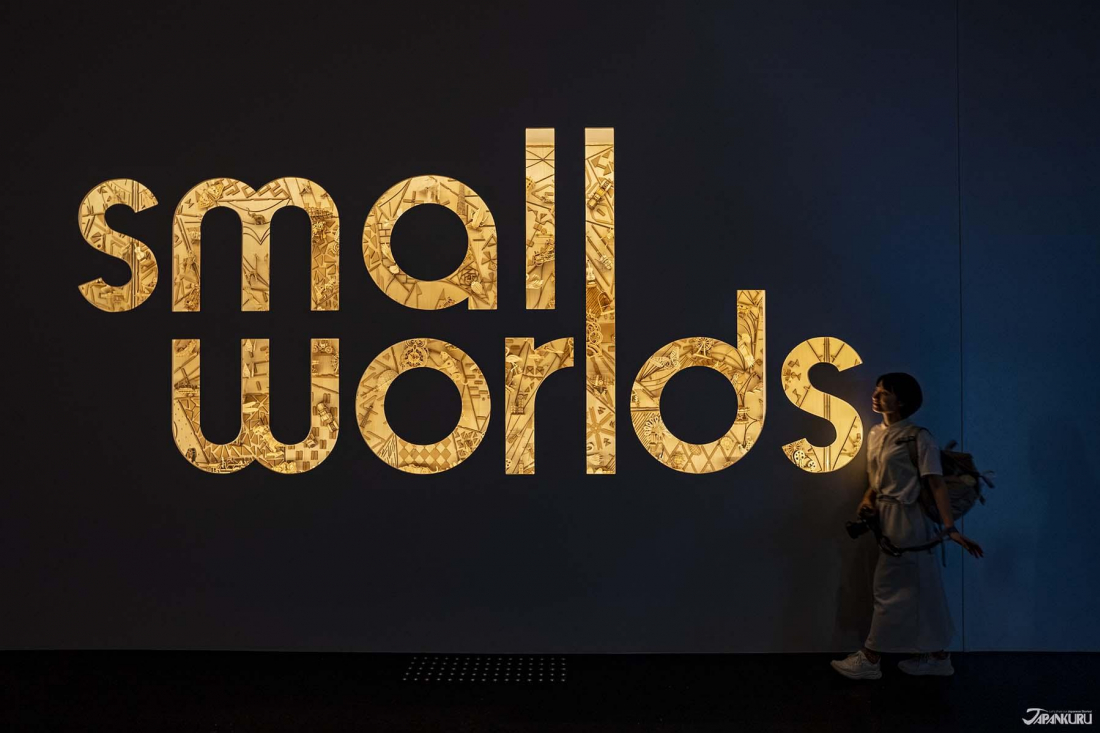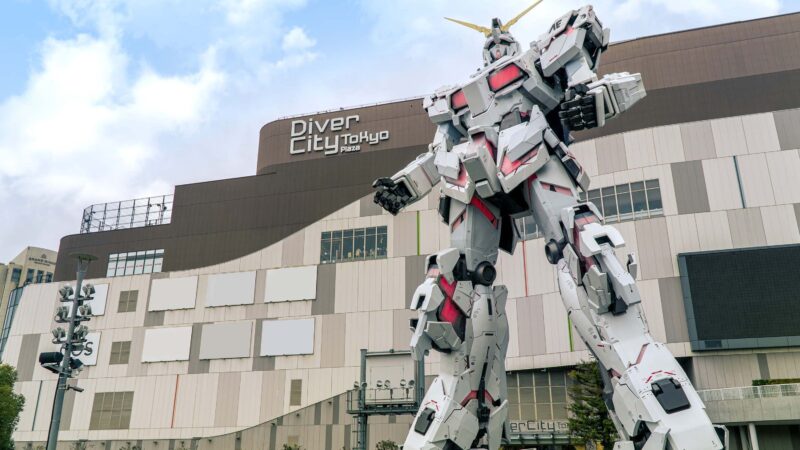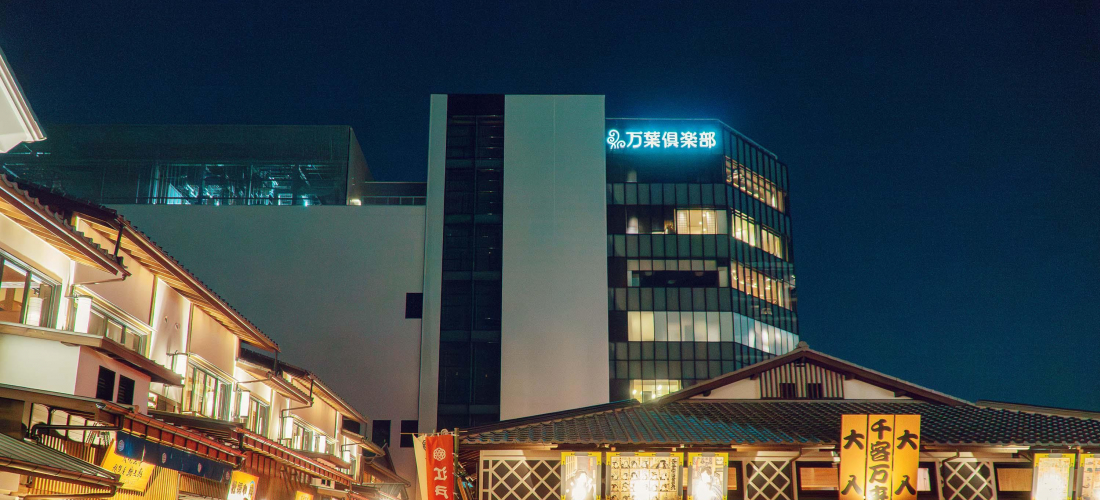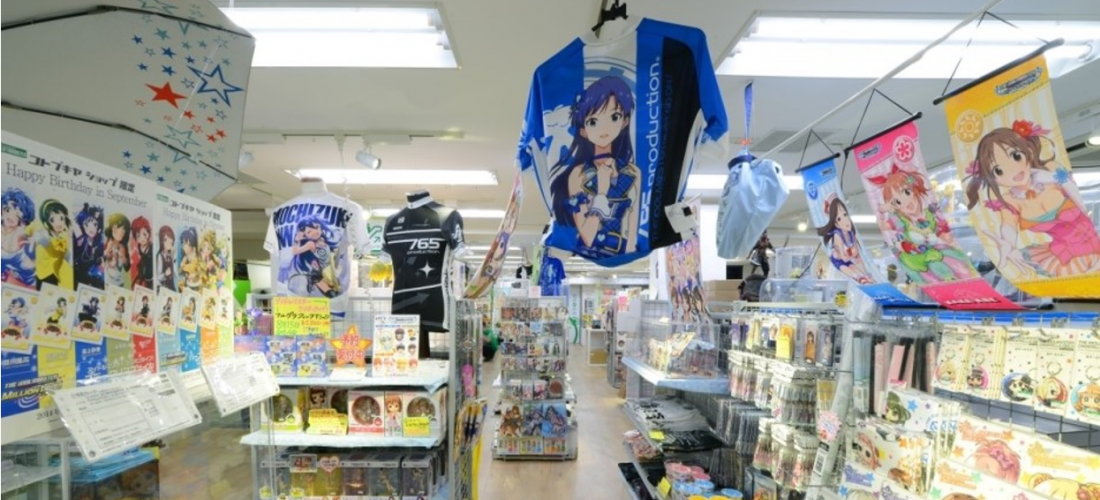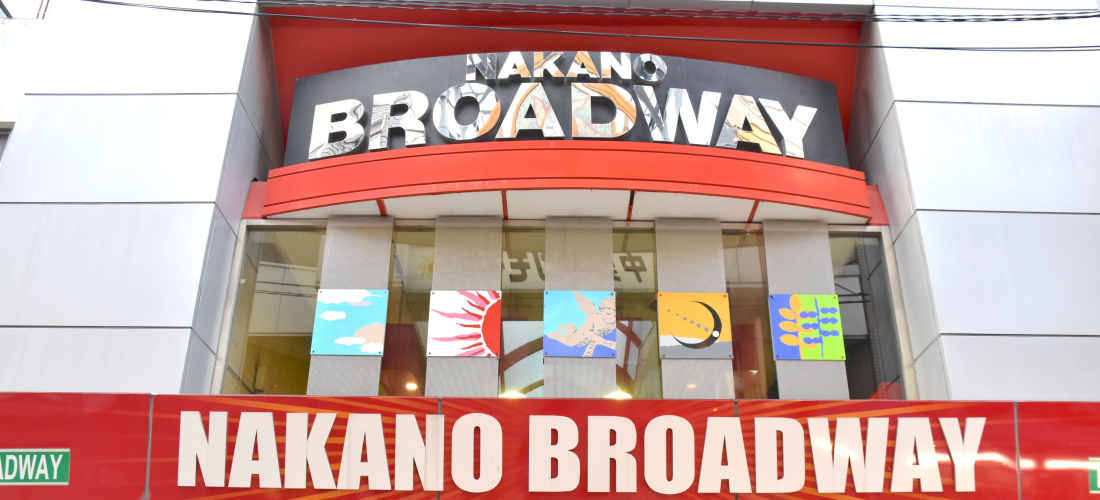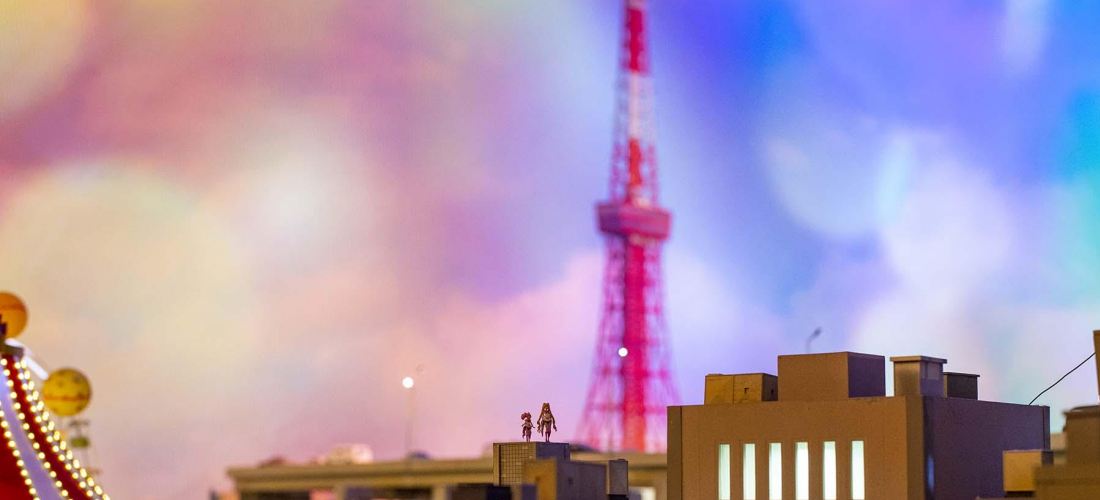
CONTENTS
This must-see Tokyo attraction is a hit with anime fans and great for families with kids, but anyone with a love of minis can appreciate the minuscule detail of Tokyo’s own Small Worlds.
Small Worlds: A Little World of Big Ideas
A whole world of miniatures, right on Tokyo Bay? Perhaps we can blame the small size of all the exhibits at Small Worlds for letting it slip under the radar, but this miniature museum in Tokyo's Ariake neighborhood makes a big impact – it's undeniably Ariake's best attraction. Created by a dedicated team of meticulous artists focused on the most minute details, Small Worlds has minuscule dioramas of everything from the fictional Tokyo-III of Evangelion and Pretty Guardian Sailor Moon's Azabu-Juban, to Japan's very real Kansai International Airport, all at 1/80th the size of real life. The small scenery is full of tiny details that suck you right into each tiny town, and the artists' sense of humor gives each new angle a lighthearted feel, with funny characters and silly stories told through the many moving pieces. After opening during the pandemic, Small Worlds has already become popular among Japanese families and anime fans in recent years, but now visitors from around the world are finally catching on to this mesmerizing world of minis.
SMALL WORLDS Miniature Museum (スモールワールズ)
Ariake Butsuryu Center, 1−3−33 Ariake, Koto City, Tokyo
Hours: 9:00 – 19:00 (final admission 18:00)
Official Website (en)
3…2…1… Taking Off Towards a Miniature New World
Perhaps it only makes sense that the route through Small Worlds starts with a rocket launch, as we find ourselves launched into a brand new world much smaller than our own. The miniature exhibits throughout Small Worlds take inspiration from real life, including the kind of little off-beat characters and funny vignettes that add a little down-to-earth personality to each museum area, but at the same time the artists add their own fantastical spin to each new scene. Watch an "enormous" rocket the size of a baseball bat take off from a realistic American-style launch pad and literally fly into the ceiling, before moving over to the space-age scenes straight from some miniature creator's imagination. Just don't miss the suited-up astronaut running from a Florida alligator!
Exploring a “Small” Planet
What would the world look like if it were all at 1/80th scale? Well, according to the artists at Small Worlds, it might be a lot more exciting. The Global Village area consists of a series of islands scattered across the room, each one with its own unique culture and local vibe, reflected in every feature from the architecture to the characters living within. There are European-style villages, with dragons taking off from the rolling green hills, and a busy urban area that looks plucked straight from the heart of Hong Kong… with the addition of some carnival rides and pandas exploring the city. It's easy to imagine that it might be fun to live in these tiny cities with all their bustling excitement, but where? It might be hard to choose a home with all these wild choices. It's a whole new world of minis, and they're not all stuck in place, either.
Small Worlds makes it clear from the start – these exhibits might be tiny and detailed, but they're always changing and full of movement. Railroad fanatics will go nuts over the trains that rush across tiny mountains and mine carts that clunk along through rocky caves, while horse girls will no doubt fall in love with the bright white Pegasus struggling to take off into the air – all at the press of a button. The cars and bikes that skim the pencil-thin streets don't even need a button to get them going! Those all work automatically, programmed to run along the roads and even stop at the red lights found at major intersections! It makes you want to pretend your phone is a high-tech drone, flying above the Global Village for some breathtaking aerial shots.
For a miniature scene that's much closer to reality, Small Worlds also has a huge replica of Kansai International Airport, complete with terminals, runways, air traffic control staff, passengers, and of course plenty of airplanes. This major Osaka airport is one of the largest in Japan, and it's all here on a tiny scale. Duck under a section of the exhibit and into a narrow opening in the middle of Kansai International Airport's many runways to get a good look at the airplanes as they take off and land in front of your eyes, slipping into the wall as they fly off into the sky. The museum even has an "airport lounge," where you can watch the daily goings-on in all the comfort of first class.
The Pretty Guardian Sailor Moon Area
*This area is not currently available for viewing due to maintenance.
In the name of the moon, it's finally time to dip into the world of the Sailor Guardians at the Pretty Guardian Sailor Moon Area, a clear favorite among comic and anime fans visiting Tokyo. This miniature of Japanese city life invites visitors to see Tokyo just as it's drawn in the mega-popular Pretty Guardian Sailor Moon series, complete with tiny cars and bike riders zipping along roads that look straight from real-life Azabu-Juban, but also itty-bitty Pretty Guardian Sailor Moon characters interspersed with the city's general population. Search the streets, spy through building windows, and scan the rooftops to discover Sailor Guardians (including Ms. Usagi Tsukino herself) and other recognizable characters in half a dozen different places. There's also a secret base and multiple buildings that actually open up to reveal detailed scenes inside! Can you find them all?
The Pretty Guardian Sailor Moon Area is one of the best places to enjoy a cool feature at Small Worlds: the day and night cycle. Every few minutes the "daylight" dims as it illuminates each of the exhibitions around the miniature museum, setting like a real sun, only to be replaced by the soft glow of streetlamps and minuscule windowpanes. In the world of Pretty Guardian Sailor Moon, the moon shines bright in the night sky, and reflects off the gleaming crystalline towers of 30th-century Crystal Tokyo for a magical display.
The Evangelion Hangar & Tokyo-III
The future imagined by the creators of Evangelion balances the mundanity of life in Tokyo-III and the drama of sci-fi battles, which is probably why the Evangelion Area at Small Worlds is popular amongst both huge fans of Evangelion and regular museum-goers alike. Enter the hangar of Evangelion cages at NERV headquarters (the Evangelion Hangar Area) first to see the giant stars of the series in miniature form, still so massive that it's hard to believe they're only at 1/80th scale, as the launch sequence pushes Evangelion Unit-01, Unit-00, and Unit-02 up from the floor and into the ceiling. Further on, in the area containing the expansive recreation of Tokyo-III, dramatic music from the original anime plays as the ground opens to reveal Evangelions battling it out with the Angels. When the fighting ends, Shinji's everyday life in Tokyo-III resumes, if only for a little while.
The Small Worlds Evangelion area has its own share of easter eggs, with characters from the anime placed throughout the two sections, and even some iconic Tokyo-III scenes recreated in miniature. You can just about trace the path that Shinji and Rei take to school, and if you search hard enough, you might even find Misato Katsuragi sunbathing with Pen Pen by her side. The music swells and sinks alongside the rising and setting sun, and it's easy to get lost in the world of Evangelion as you search through every tiny vignette and moving part of the city scenery.
Munching on Not-So-Mini Meals
At Small Worlds, even the Museum Cafe is part of the experience, with miniature decorations on each table and exhibitions around the room. The theme of the cafe is Japan after dark, so you can grab lunch or an afternoon snack as you admire some of the country's most popular nighttime scenic views, from futuristic industrial scenery to illuminated cherry blossoms. Azuchi Castle is the star of the show, and you can poke your head up through a hole in the ground of the castle park to see it all up close. Fortunately, nothing about the Museum Cafe menu is miniature at all, so you can enjoy the Japanese classics like omurice and curry rice to the fullest.
Becoming a Real Resident of Tokyo’s Small Worlds
The gift shop at Small Worlds offers original merchandise and popular items with Evangelion and Sailor Moon designs, but the most exciting souvenir option of all is a totally-customized miniature 3D figure of your very own. Stop by the 3D figure studio to pose for a photo in the futuristic 3D camera, and turn the scans into a mini-me figure that's either 1/80th scale (the absolutely tiny size used in the Small Worlds diorama) or 1/35th scale (a slightly more practical but still very small 5 cm or so). After 2~3 weeks of processing, the figure can be sent directly to you in the mail, ready to live in a diorama of your making, or perhaps hang out on your bookshelf. To see the 3D camera results even quicker, they'll give you a QR code to scan into the Avatavi app for a little digital augmented reality avatar!
But that's not all – Small Worlds also offers Resident Rights Plans, so that you too can become a part of the museum. After peering down into each of the exhibits, you might have noticed some of the tiny humans look a little different – looking out at the crowds, or pulling silly poses – because some of those figures are actually real museum guests. Purchase a Resident Rights Plan with your 3D figure, and you'll not only get a figure sent to your home, but another one will be placed right into the museum exhibits, in whichever area you choose! There are a lot of waving spectators, but your pose can be anything and go anywhere (practicality permitting). Show off your creativity by cringing from a bucking dragon or sidling up to an "enormous" panda in the Global Village, or choose to spend your days hanging out with your favorite anime characters instead, with "residency" in the Sailor Moon and Evangelion areas. This small world is your oyster! (To get a picture of yourself in your new Small Worlds home, make sure to come back and visit soon, or get a friend visiting the museum to do it for you!)
Peek Behind the Scenes on Your Way Out
From Tokyo to the wide world beyond, and even into outer space, Small Worlds offers a small glance at an expansive world of minis, populated with your favorite anime characters and maybe even yourself. So finally, after exploring each of the exhibits, you even get a chance to sneak a peek behind the scenes! The Workshop Area offers visitors the chance to get hands-on by creating their own miniature models, and the Small Worlds Creative Studio even lets you see the museum's artists at work. Scattered with materials used to make the museum's many dioramas, this space is an amazing chance to see how the miniature worlds are created and maintained, and even check out some seasonal and holiday decorations temporarily added to the museum exhibits in years past. For all the new additions the artists are working on now, well, you'll just have to return to Small Worlds again soon to check them out!
Check Out the New “Little Universe OKINAWA” Next
Ready for even more miniatures? SMALL WORLDS now has a sister museum in Japan's sunny island prefecture of Okinawa, called Little Universe OKINAWA. This new sightseeing destination packs a whole universe of 1/80th scale miniatures into a sprawling museum space the size of 13 tennis courts, featuring more fun scenes from Japanese anime, a Tokyo cityscape, and local Okinawan miniatures as well. (The picture above almost looks like CG, but it's actually a photo of a real miniature Shuri Castle, which is just one part of their new 18th-century Okinawa area!) Just like at SMALL WORLDS in Tokyo, at Little Universe OKINAWA you can pose for the 3D camera and get miniature figures made, or try their "My Stamp" service for personalized video data that you can use like stickers in text messages. As an entirely indoor facility, Little Universe OKINAWA is perfect for rainy days when beaches and shopping streets are a little too dreary, so remember to keep it as an ace up your sleeve during your next trip to Okinawa!
Little Universe OKINAWA
Iias Okinawa Toyosaki, 3-53 Toyosaki, Tomigusuku, Okinawa
Hours:
Weekdays: 11:00 – 19:00
Weekends & Holidays: 10:00 – 19:00
* Final admission 30 minutes prior to closure. Closed Tuesdays until Apr. 28, 2024.
Official Website (jp)
For more info and updates from Japan, check Japankuru for new articles, and don't forget to follow us on X (Twitter), Instagram, and Facebook!
COMMENT
FEATURED MEDIA
VIEW MORE 
A New Tokyo Animal Destination: Relax & Learn About the World’s Animals in Japan
#pr #japankuru #anitouch #anitouchtokyodome #capybara #capybaracafe #animalcafe #tokyotrip #japantrip #카피바라 #애니터치 #아이와가볼만한곳 #도쿄여행 #가족여행 #東京旅遊 #東京親子景點 #日本動物互動體驗 #水豚泡澡 #東京巨蛋城 #เที่ยวญี่ปุ่น2025 #ที่เที่ยวครอบครัว #สวนสัตว์ในร่ม #TokyoDomeCity #anitouchtokyodome

Shohei Ohtani Collab Developed Products & Other Japanese Drugstore Recommendations From Kowa
#pr #japankuru
#kowa #syncronkowa #japanshopping #preworkout #postworkout #tokyoshopping #japantrip #일본쇼핑 #일본이온음료 #오타니 #오타니쇼헤이 #코와 #興和 #日本必買 #日本旅遊 #運動補充能量 #運動飲品 #ช้อปปิ้งญี่ปุ่น #เครื่องดื่มออกกำลังกาย #นักกีฬา #ผลิตภัณฑ์ญี่ปุ่น #อาหารเสริมญี่ปุ่น

도쿄 근교 당일치기 여행 추천! 작은 에도라 불리는 ‘가와고에’
세이부 ‘가와고에 패스(디지털)’ 하나면 편리하게 이동 + 가성비까지 완벽하게! 필름카메라 감성 가득한 레트로 거리 길거리 먹방부터 귀여움 끝판왕 핫플&포토 스폿까지 총집합!
Looking for day trips from Tokyo? Try Kawagoe, AKA Little Edo!
Use the SEIBU KAWAGOE PASS (Digital) for easy, affordable transportation!
Check out the historic streets of Kawagoe for some great street food and plenty of picturesque retro photo ops.
#pr #japankuru #도쿄근교여행 #가와고에 #가와고에패스 #세이부패스 #기모노체험 #가와고에여행 #도쿄여행코스 #도쿄근교당일치기 #세이부가와고에패스
#tokyotrip #kawagoe #tokyodaytrip #seibukawagoepass #kimono #japantrip

Hirakata Park, Osaka: Enjoy the Classic Japanese Theme Park Experience!
#pr #japankuru #hirakatapark #amusementpark #japantrip #osakatrip #familytrip #rollercoaster #retrôvibes #枚方公園 #大阪旅遊 #關西私房景點 #日本親子旅行 #日本遊樂園 #木造雲霄飛車 #히라카타파크 #สวนสนุกฮิราคาตะพาร์ค

🍵Love Matcha? Upgrade Your Matcha Experience With Tsujiri!
・160년 전통 일본 말차 브랜드 츠지리에서 말차 덕후들이 픽한 인기템만 골라봤어요
・抹茶控的天堂!甜點、餅乾、飲品一次滿足,連伴手禮都幫你列好清單了
・ส่องมัทฉะสุดฮิต พร้อมพาเที่ยวร้านดังในอุจิ เกียวโต
#pr #japankuru #matcha #matchalover #uji #kyoto #japantrip #ujimatcha #matchalatte #matchasweets #tsujiri #말차 #말차덕후 #츠지리 #교토여행 #말차라떼 #辻利抹茶 #抹茶控 #日本抹茶 #宇治 #宇治抹茶 #日本伴手禮 #抹茶拿鐵 #抹茶甜點 #มัทฉะ #ของฝากญี่ปุ่น #ชาเขียวญี่ปุ่น #ซึจิริ #เกียวโต

・What Is Nenaito? And How Does This Sleep Care Supplement Work?
・你的睡眠保健品——認識「睡眠茶氨酸錠」
・수면 케어 서플리먼트 ‘네나이토’란?
・ผลิตภัณฑ์เสริมอาหารดูแลการนอน “Nenaito(ネナイト)” คืออะไร?
#pr #japankuru #sleepcare #japanshopping #nenaito #sleepsupplement #asahi #睡眠茶氨酸錠 #睡眠保健 #朝日 #l茶胺酸 #日本藥妝 #日本必買 #일본쇼핑 #수면 #건강하자 #네나이토 #일본영양제 #อาหารเสริมญี่ปุ่น #ช้อปปิ้งญี่ปุ่น #ร้านขายยาญี่ปุ่น #ดูแลตัวเองก่อนนอน #อาซาฮิ

Japanese Drugstore Must-Buys! Essential Items from Hisamitsu® Pharmaceutical
#PR #japankuru #hisamitsu #salonpas #feitas #hisamitsupharmaceutical #japanshopping #tokyoshopping #traveltips #japanhaul #japantrip #japantravel

Whether you grew up with Dragon Ball or you just fell in love with Dragon Ball DAIMA, you'll like the newest JINS collab. Shop this limited-edition Dragon Ball accessory collection to find some of the best Dragon Ball merchandise in Japan!
>> Find out more at Japankuru.com! (link in bio)
#japankuru #dragonball #dragonballdaima #animecollab #japanshopping #jins #japaneseglasses #japantravel #animemerch #pr

This month, Japankuru teamed up with @official_korekoko to invite three influencers (originally from Thailand, China, and Taiwan) on a trip to Yokohama. Check out the article (in Chinese) on Japankuru.com for all of their travel tips and photography hints - and look forward to more cool collaborations coming soon!
【橫濱夜散策 x 教你怎麼拍出網美照 📸✨】
每次來日本玩,是不是都會先找旅日網紅的推薦清單?
這次,我們邀請擁有日本豐富旅遊經驗的🇹🇭泰國、🇨🇳中國、🇹🇼台灣網紅,帶你走進夜晚的橫濱!從玩樂路線到拍照技巧,教你怎麼拍出最美的夜景照。那些熟悉的景點,換個視角說不定會有新發現~快跟他們一起出發吧!
#japankuru #橫濱紅磚倉庫 #汽車道 #中華街 #yokohama #japankuru #橫濱紅磚倉庫 #汽車道 #中華街 #yokohama #yokohamaredbrickwarehouse #yokohamachinatown

If you’re a fan of Vivienne Westwood's Japanese designs, and you’re looking forward to shopping in Harajuku this summer, we’ve got important news for you. Vivienne Westwood RED LABEL Laforet Harajuku is now closed for renovations - but the grand reopening is scheduled for July!
>> Find out more at Japankuru.com! (link in bio)
#japankuru #viviennewestwood #harajuku #omotesando #viviennewestwoodredlabel #viviennewestwoodjapan #비비안웨스트우드 #오모테산도 #하라주쿠 #日本購物 #薇薇安魏斯伍德 #日本時尚 #原宿 #表參道 #japantrip #japanshopping #pr

Ready to see TeamLab in Kyoto!? At TeamLab Biovortex Kyoto, the collective is taking their acclaimed immersive art and bringing it to Japan's ancient capital. We can't wait to see it for ourselves this autumn!
>> Find out more at Japankuru.com! (link in bio)
#japankuru #teamlab #teamlabbiovortex #kyoto #kyototrip #japantravel #artnews
Photos courtesy of teamLab, Exhibition view of teamLab Biovortex Kyoto, 2025, Kyoto ® teamLab, courtesy Pace Gallery

Japanese Makeup Shopping • A Trip to Kamakura & Enoshima With Canmake’s Cool-Toned Summer Makeup
#pr #canmake #enoshima #enoden #에노시마 #캔메이크 #japanesemakeup #japanesecosmetics

⚔️The Robot Restaurant is gone, but the Samurai Restaurant is here to take its place. Check it out, and don't forget your coupon!
🍣신주쿠의 명소 로봇 레스토랑이 사무라이 레스토랑으로 부활! 절찬 쿠폰 발급중
💃18歲以上才能入場的歌舞秀,和你想的不一樣!拿好優惠券去看看~
#tokyo #shinjuku #samurairestaurant #robotrestaurant #tokyotrip #도쿄여행 #신주쿠 #사무라이레스토랑 #이색체험 #할인이벤트 #歌舞伎町 #東京景點 #武士餐廳 #日本表演 #日本文化體驗 #japankuru #japantrip #japantravel #japanlovers #japan_of_insta

Japanese appliance & electronics shopping with our KOJIMA x BicCamera coupon!
用JAPANKURU的KOJIMA x BicCamera優惠券買這些正好❤️
코지마 x 빅 카메라 쿠폰으로 일본 가전 제품 쇼핑하기
#pr #japankuru #japanshopping #kojima #biccamera #japaneseskincare #yaman #dji #osmopocket3 #skincaredevice #日本購物 #美容儀 #相機 #雅萌 #日本家電 #일본여행 #면세 #여행꿀팁 #일본쇼핑리스트 #쿠폰 #일본쇼핑 #일본브랜드 #할인 #코지마 #빅카메라 #japankurucoupon
MAP OF JAPAN
SEARCH BY REGION

LATEST
VIEW MOREEVENT CALENDAR
VIEW MORE
